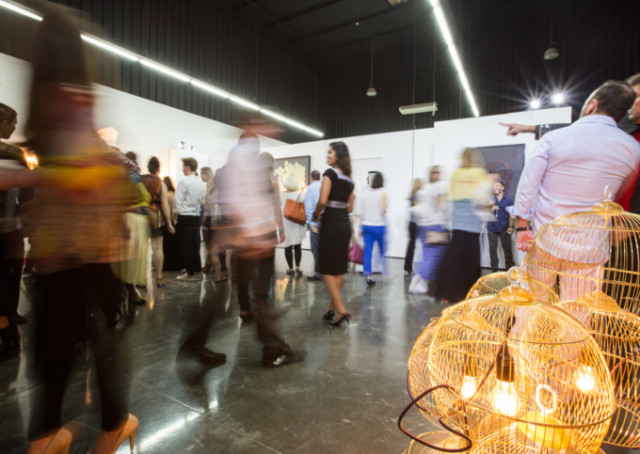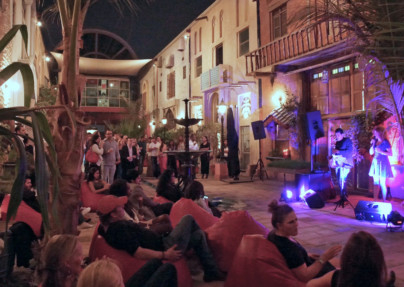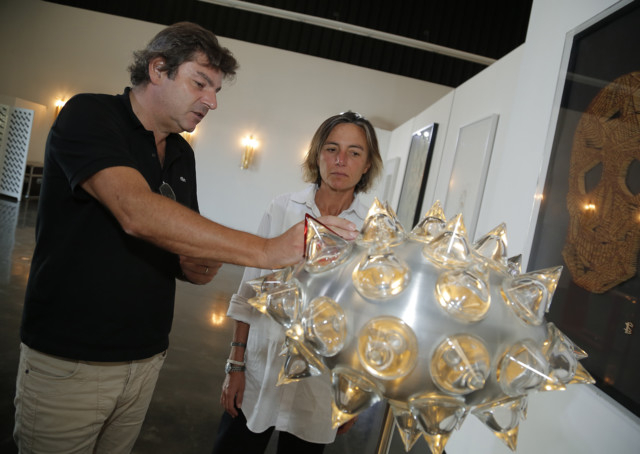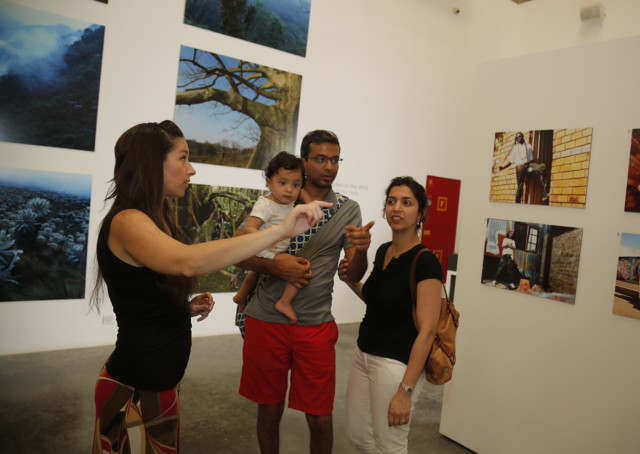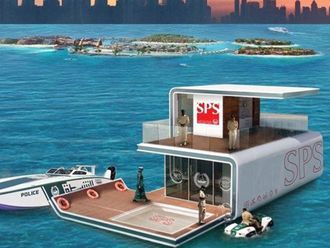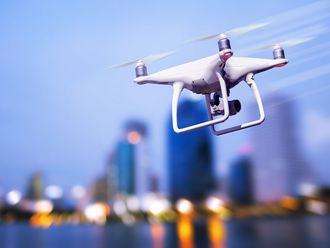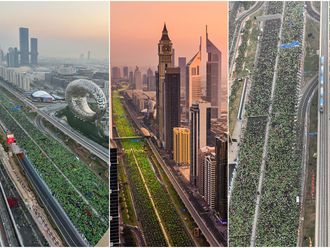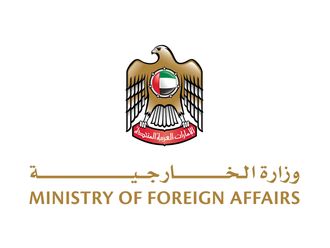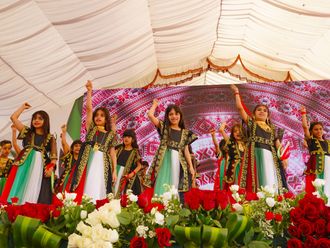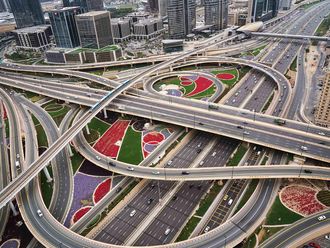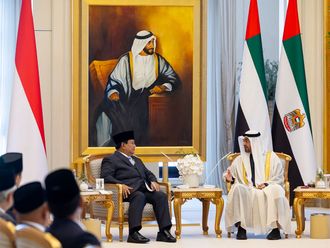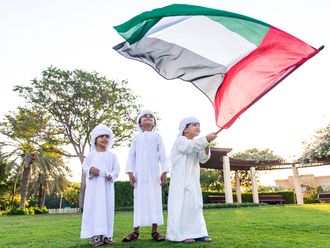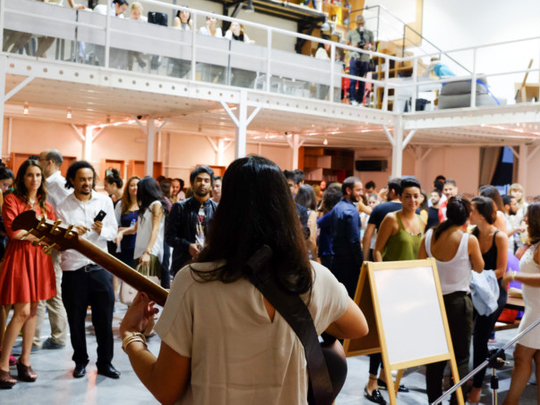
DUBAI Thousands of people converging on Al Quoz at nightfall could have meant only one thing a few years ago: workers in busloads retiring to their nondescript labour camps.
But on September 15, when over 4,000 people lined up on Street 8, Al Quoz 1, there were neither workers nor buses in sight. As well-heeled residents got off their swanky cars at a cluster of warehouses, it was a defining moment for one of Dubai’s most dramatic transformations in recent times.
Far from the once infamous industrial quarter housing workshops and labour accommodations, Al Quoz is now the most happening destination for art, culture and entertainment in town with entry being free for visitors.
Alserkal Avenue, the art district where last month’s Galleries Night was held, was once an uninspiring marble factory. But today, like many other warehouses in the neighbourhood, its industrial sheds have given way to bustling creative spaces. According to a map of the area developed by Alserkal, the four industrial districts of Al Quoz are now home to over 100 art galleries, studios, concept avenues, speciality gyms and urban cafes. Of these, 37 are on Alserkal Avenue itself, its Dh50 million expansion making room for 40 more over the next few months.
Abdelmonem Bin Eisa Alserkal, developer of the avenue, said: “With time, we will be one of the main art capitals in the world, like New York, London and Berlin.”
He said the massive expansion of the art district will compliment its contemporary art focus with a diversified portfolio to include architecture, media, design and fashion concepts, besides alternative cafes, project spaces and outdoor facilities to host music concerts, film screenings, and other events.
A drive past Street 8 in Al Quoz 1 alone shows how the landscape is changing, bold splashes of paint and signage bringing to life listless industrial sheds. The vast creative spaces within Alserkal apart, there’s also Round, The Mine and Rig in front and the Zoo Skate Park in the corner. Just behind on 6A Street is the Courtyard, the first on the scene.
Multipurpose
Saqayeg Arabi of Total Arts, who coordinates with Courtyard spaces, said: “Courtyard was conceptualised by architect and designer Dariush Zandi in 1998. It currently houses four art galleries, a theatre, a film and photo studio, a communication and PR outlet and four interior design and furniture concept stores. It also hosts a number of community events like concerts, documentary nights and farmers’ markets.”
There are many reasons behind the art boom. As every gallery operator will point out, cheaper rentals, larger spaces and easy access top the list. “Rent is cheaper than anywhere else. They range from Dh45 to Dh90 per square feet,” said Hetal Pawani, director of thejamjar on 17A Street. “We moved to Al Quoz in 2007 for bigger premises which offered the flexibility we needed to be an active community arts space with ample parking. It gave us the opportunity to introduce projects like ArtintheCity with ArtMap, ArtBus and 17A Art Consultants, all under one roof.”
Pawani added thejamjar was emboldened to make the shift as three other establishments - Courtyard, The Third Line and IVDE (then B21 Gallery), had already sunk their teeth in. “So we saw the potential and took the risk. Now, it’s a flourishing area with establishments like Alserkal Avenue, cafes and the First Gulf Bank Metro Station. Bus No. 25 brings you right outside thejamjar. It doesn’t get better than that.”
Arsekal’s La Galerie Nationale owner Guillaume Cuiry said: “The concept of art in a warehouse is highbrow and fun. My annual rent is Dh160,000 and I would perhaps be paying three times more for the same space elsewhere in the city. Moreover, it’s so easy for trucks to deliver goods here. They can park right in front of our doors. The art district also fosters a sense of community among art lovers.”
Even recreational venues vouch for the convenience. Doran Davies of the spring-loaded playground BOUNCE which launched in June 2014, said: “We were looking at somewhere central that would give us the space to build an EPIC trampoline warehouse that would be accessible by car and public transport – there is literally nowhere else in Dubai that ticked the boxes like Al Quoz. It also needed to have bucket -loads of character and we wanted somewhere urban, edgy and cool, where we would be surrounded by like-minded individuals who inspired us.”
Lara Matossian-Roberts of the Dubai Drama Group, many of whose events are held in Al Quoz, said: “Art spaces here are very supportive and help performing artistes showcase their talent. These spaces are off-beat, quirky and innovative. We love being in these alternative spaces.”
On the downside, she said rampant construction activity in the area can result in traffic delays.
Then there are other issues too. Pawani said: “Limitations include lower electrical and water capacity in warehouses as they were traditionally used for storage. Earlier and maybe even today, licensing allows all types of commercial business in these warehouses. Interiors can cost more as all you get is a shell with four walls.”
In the initial years, people had reservations about visiting Al Quoz. Some may still have inhibitions of coming to what is often perceived as a dusty, gritty area, said Pawani. But he added that the plethora of events being held in the area is changing such perceptions.
YOUSPEAK: Will you visit Al Quoz for the art or entertainment?


